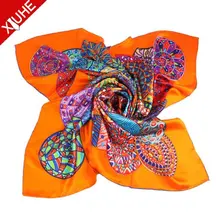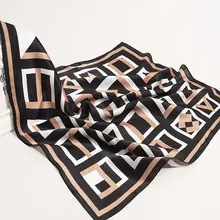A cycling clothes ensemble is essential for both amateur and professional cyclists, designed to enhance comfort and performance. These garments are tailored to fit the body snugly, reduce air resistance, and manage sweat through advanced materials and design. Cycling gear is not just about utility; it's a fusion of technology, comfort, and style, aimed at improving the cycling experience.
Types of Cycling Apparel
The variety of cycling gear encompasses a range of products each with unique characteristics. From aerodynamic race kits to rugged mountain biking shorts and thermal winter jackets, each type serves a specific purpose. Road cyclists often prefer tight-fitting jerseys and bike shorts that reduce drag, while off-road bikers might opt for looser fits and more durable materials. Triathlon suits integrate quick-drying features and multi-sport functionality, illustrating the specialized nature of cycling apparel. Additionally, casual urban wear has emerged, blending functionality with everyday style, allowing cyclists to transition seamlessly from their ride to their daily activities without the need for a wardrobe change.
Structure of Cycling Clothes
The physical components of cycling shorts and jerseys include panels that contour to the body, flatlock stitching to prevent chafing, and grippers to keep garments in place. High-quality bike shorts women and bicycle shorts for men often feature a multi-density chamois pad, which reduces pressure points and provides cushioning for long rides. Ventilation systems such as mesh panels in jerseys or laser-cut holes are strategically placed to enhance airflow and cooling. Reflective accents and details are also incorporated to increase visibility during low-light conditions, ensuring safety on the road.
Materials and Their Properties in Cycling Gear
In the realm of cycling clothes, materials are chosen for their properties such as elasticity, strength, and moisture management. Polyester is favored for its durability and quick-drying capabilities, while spandex is incorporated for stretch and fit. Advanced textiles like Spandex/nylon blends offer compression, which can improve blood flow and reduce muscle fatigue. The integration of UV protective fabrics helps shield the skin from harmful solar radiation during long rides. Moreover, the advent of eco-friendly materials is gaining traction, with recycled fabrics making their way into cycling apparel, appealing to environmentally conscious consumers.
Business Usages and Applications of Cycling Apparel
Cycling gear is indispensable in professional sports settings, cycling clubs, and bike rental businesses. Customized kits with team logos are common in corporate promotions and sponsored events, enhancing brand visibility. In bike shops and retail, a diverse range of cycling clothes caters to different market segments, from casual riders to hardcore enthusiasts, demonstrating the apparel's versatility and business value. The use of cycling apparel extends to cycling tours and adventure travel businesses, where the functionality and comfort of the gear can significantly enhance the customer experience.
Functions of Cycling Clothes
The primary function of cycling gear is to provide comfort and improve performance. This is achieved through sweat management, temperature regulation, and reducing friction. Specialized garments like gore cycle wear also offer protection against the weather, with water-resistant and wind-blocking capabilities. Reflective elements on clothing are functional features that enhance safety by increasing visibility to other road users. Additionally, the gear is designed to support the body's natural movements while cycling, with articulated joints and stretchable fabrics that allow for full range of motion without constriction.
Features of Cycling Shorts and Jerseys
Distinct features of cycling shorts include the presence of a padded chamois, leg grippers, and sometimes bib straps for added support. Jerseys might feature full-length zippers for temperature control, back pockets for storage, and elastic hems. Ladies bike shorts and men's biker shorts may have varying pad thickness and shapes, catering to anatomical differences and riding styles, which are unique selling points for these products. Some jerseys also incorporate antimicrobial treatments to reduce odor, enhancing the wearer's comfort during and after a ride.
Benefits of Investing in Quality Cycling Gear
Quality cycling clothes bring numerous benefits, such as reducing the risk of saddle sores, managing perspiration effectively, and providing freedom of movement. For businesses, offering high-quality gear means satisfied customers who are likely to return and recommend the store, leading to increased customer loyalty and positive word-of-mouth. Furthermore, durable materials and construction mean that the garments will withstand the rigors of regular use, representing a long-term investment for both the retailer and the consumer.
How to Use Cycling Apparel Effectively
Effective use of cycling gear involves wearing the right clothes for the conditions. Layering is key in variable weather, and selecting the correct size ensures the features like compression and aerodynamics can function as intended. For optimal performance, the gear should be worn as a second skin, without any bunching or sagging fabric. When engaging in night riding, choosing apparel with reflective elements is crucial for visibility and safety.
How to Choose the Right Cycling Clothes?
Choosing the right cycling gear requires assessing the type of cycling one is engaged in, the climate, and personal comfort. It's important to consider the fit, as well as the level of padding in shorts. Features like UV protection and reflective elements might be important for those riding in sunny or low-light conditions. For colder climates, selecting garments with thermal insulation and wind-blocking features will provide warmth and comfort during rides.
How to Clean and Maintain Cycling Gear
Cleaning cycling shorts and jerseys properly involves turning them inside out to protect colors and washing on a gentle cycle. Post-ride, it's advisable to rinse the clothes to remove sweat, which can break down the fabric over time. Regular inspection for signs of wear, particularly in high-friction areas, can prevent unexpected garment failure. For maintenance, following the manufacturer's guidelines will ensure that the technical fabrics retain their performance characteristics and longevity.
Target Audience and Meeting Their Needs
The target audience for cycling clothes is diverse, ranging from professional athletes to recreational riders. For the competitive cyclist, performance-oriented gear with aerodynamic fits and advanced materials is crucial. Recreational riders might prioritize comfort and style, with a preference for gore cycling clothing that offers a balance between functionality and casual appeal. Understanding these needs allows manufacturers and retailers to cater to the specific preferences of their clientele. Youth and entry-level markets are also emerging, seeking high-quality yet affordable options, which presents an opportunity for businesses to expand their product lines to accommodate this growing segment.












































 浙公网安备 33010002000092号
浙公网安备 33010002000092号 浙B2-20120091-4
浙B2-20120091-4